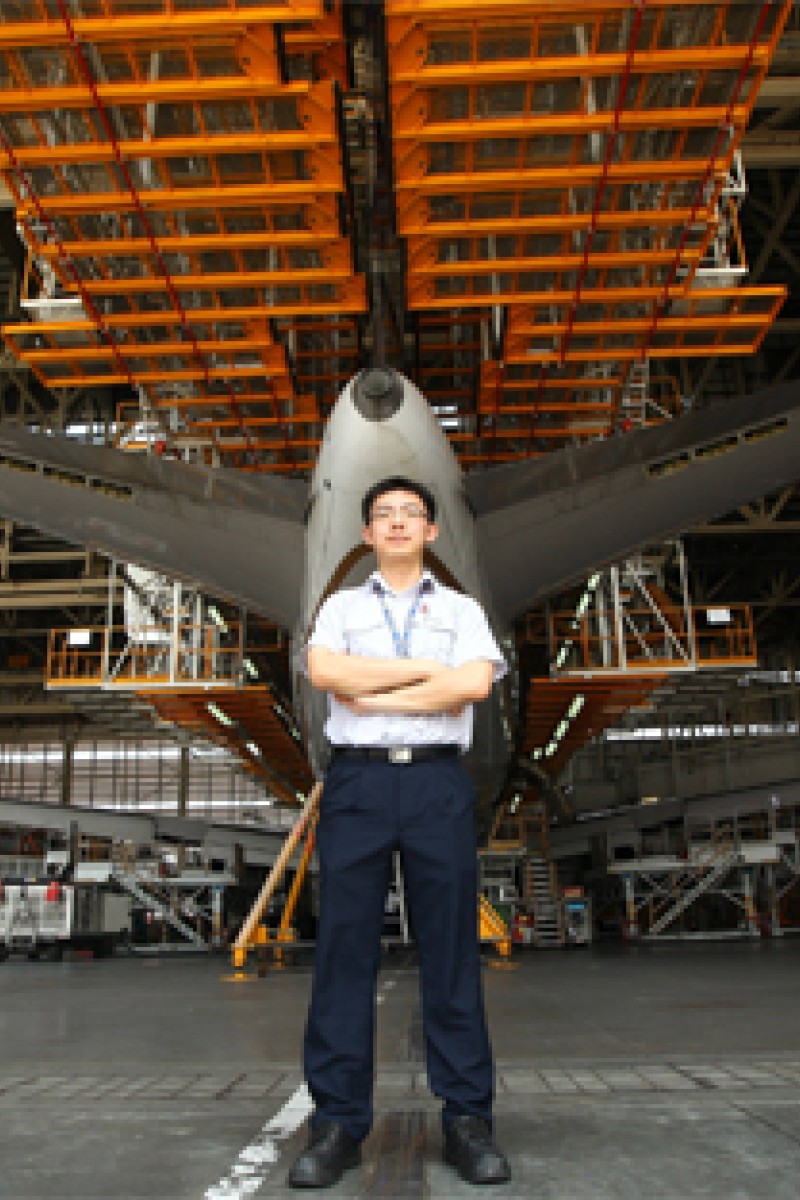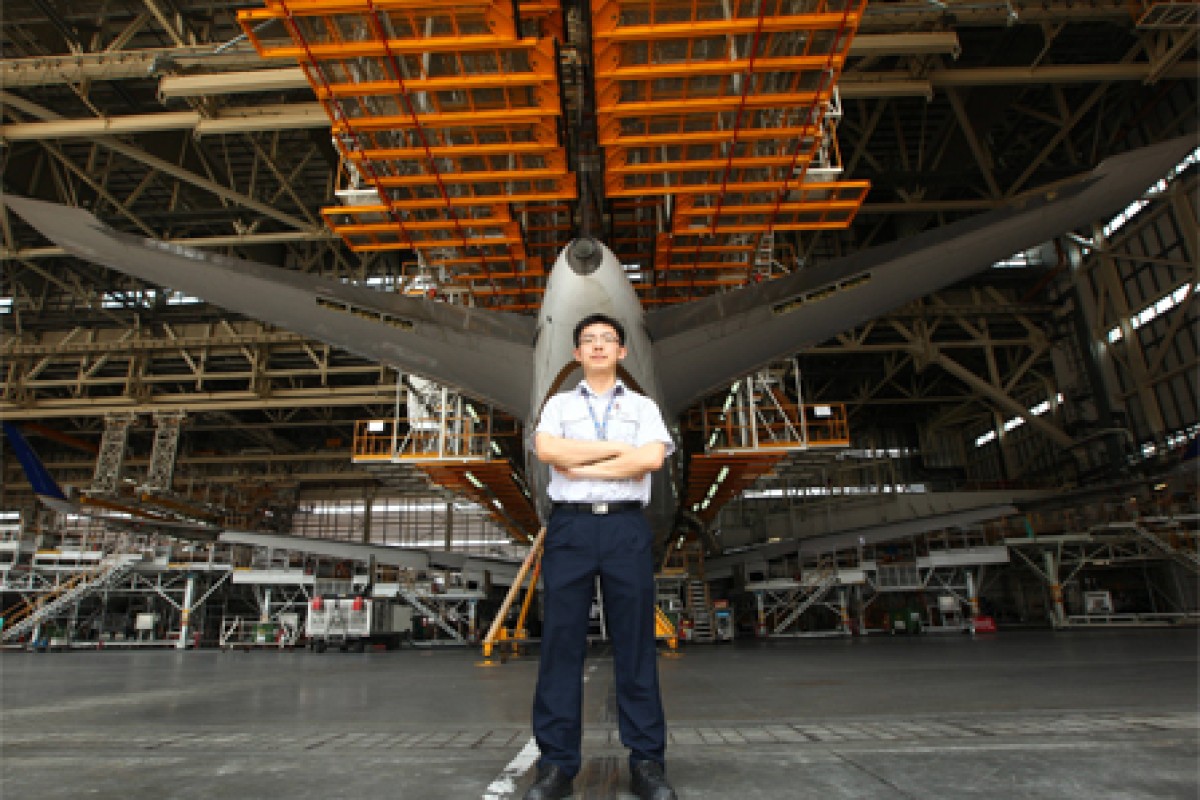
Helping to maintain aircraft so they are in perfect working order is challenging but rewarding
 Aircraft engineer Alex Ang inside a hangar at Hong Kong Aircraft Engineering Company.
Aircraft engineer Alex Ang inside a hangar at Hong Kong Aircraft Engineering Company.Get started
The Hong Kong Institute of Vocational Education (Tsing Yi) offers a three-year higher-diploma course in aircraft engineering.
A new graduate can join the aircraft maintenance industry as an aircraft engineering licence trainee.
Moving up
After two years of training, and having passed an examination, a trainee receives a licence from Hong Kong's Civil Aviation Department and becomes a licensed aircraft technician.
Every aircraft model requires the technician to have the designated licence to repair it.
For example, a technician who repairs Boeing 737-NG, 747-400 and 767 planes should have the licence for all those models. A technician usually can work on up to three models.
There are two types of aircraft maintenance: line maintenance and base maintenance.
Line maintenance involves an aircraft staying on an airfield for less than 36hours before flying again. Technicians will carry out routine checks and fix any problems. This basic check-up usually lasts about an hour.
Base maintenance involves a thorough check-up, when aircraft are taken apart, checked and reassembled in the hangar. Every plane needs to undergo a thorough check-up every twoyears.
The career of an aircraft maintenance technician is quite rewarding. Outstanding performers have the chance to become a supervisor who leads a team of technicians. The next step is assistant engineer, then engineer. An engineer is the top decision maker and has several people reporting to him about several aircraft at the same time.
Race to the top
Aircraft maintenance staff have a huge responsibility - a small mistake could lead to a big disaster. Therefore, they must try to maintain high standards at work and look to achieve perfection.
They must pay attention to detail and spot any defects on planes.
Engineers follow manuals step by step when repairing a plane. This can be a complicated task, so they must be attentive and follow correct procedures.
Proficiency in English is also important because all the manuals, documents and other materials related to the aviation industry are written in English.
Where to apply
Aircraft maintenance companies, airlines and Hong Kong's Government Flying Service.
Rewards and benefits
Aircraft engineers are paid a monthly salary, with bonuses and overtime pay. There are also allowances for working night shifts and for working in hostile, outdoor airfields.
A day in the life
An aircraft technician's working hours depend on whether they do line or base maintenance.
Line maintenance is a 24/7 job: technicians work two 12-hour shifts around the clock. They usually get two days off after doing four shifts.
Base maintenance work is less demanding: there are no overnight shifts and technicians usually work from 8am to 5pm.
Technicians normally work a five-day week, but staff may be required to do overtime to meet deadlines.
Jargon
Front of the car - refers to the plane's engine.
Hangar - the place where an aircraft is stationed for maintenance.
MTE (Mobile Tail Enclosure) - a movable, box-like structure that keeps the back of the plane under cover in case the hangar is not big enough for it to fit in.
Tracker - a type of towing truck that lifts the lead wheel of the plane and pushes it back because aircraft can only move forward.
Interviewee: Alex Ang Wai-ho, engineer (base maintenance) at Hong Kong Aircraft Engineering Company (Haeco)